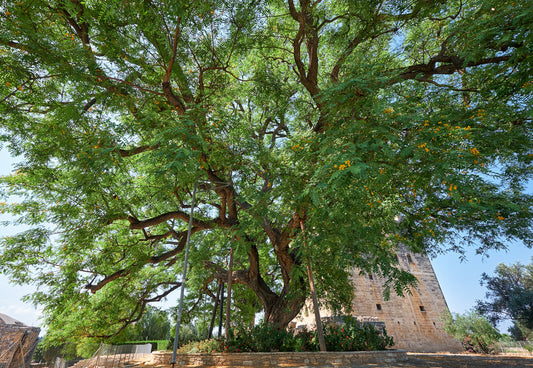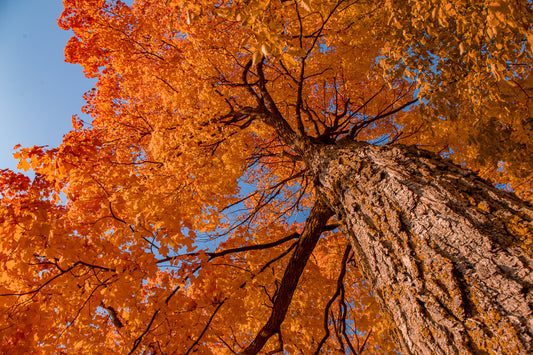Introduction
Teak, renowned for its warm hues, attractive grain, and remarkable resilience, has been a favored material for furniture design for centuries. Interior designers and architects appreciate the intrinsic qualities of teak, from its weather resistance to its flexibility in crafting intricate designs. The natural aesthetic of teak, marked by its rich, golden-brown color, is capable of imbuing interiors with a distinctive charm and character that is hard to replicate.
One exemplary utilization of teak is seen in Reiko Tanabe's distinguished Murai Stool. This stool is a fusion of refined style, efficient production, and exceptional technical skill. Composed of three identical pieces, each meticulously bent and glued together, the stool demonstrates the adaptability and durability of teak. The meeting points of the stool are cleverly hidden, joining seamlessly at the base and the top, showcasing a detail-oriented approach and mastery over the medium.

Reiko Tanabe's Murai Stool
The Murai Stool is more than just a functional piece of furniture. Tanabe's design transcends pure utility, transforming the stool into a work of art. The warm, natural quality of the teak material complements the minimalist aesthetic of the stool, while the geometry of its construction creates a fascinating interplay between positive forms and negative voids. Its myriad uses, ranging from a seat to a table, makes the Murai Stool an indispensable asset in Japan's interiors, where space is often a luxury.
This piece is just one reflection, continuing centuries-old cultural practices. Teak, indigenous to South Asia, has been cherished for millennia due to its durability, resistance to pests, and adaptability to the weather. From the construction of Uru boats in the Indian region of Kerala to the erection of the famed Shwenandaw Monastery in Myanmar, teak has been utilized extensively in various cultural contexts. In particular, India, Myanmar, and regions of Thailand and Laos have seen this material serve as an integral part of shipbuilding, house construction, furniture making, and religious architecture, owing to its longevity and natural resistance to termites.
Reminding us that art and design aren’t separate from history and politics, teak's popularity in the West is a narrative intertwined with the history of colonialism. The colonial powers, particularly the British, viewed teak primarily as an aesthetic resource to be exploited, leading to intensive deforestation that continues to impact these regions. This perspective neglected the ecological role of teak trees as living components of a broader ecosystem.
Equipped with the understanding of teak's rich design legacy, historical significance, and ecological impact, let's embark on a journey to the tropical forests where this majestic tree thrives. From the dense woodlands of Southeast Asia to the managed plantations around the world, the teak tree's story is interwoven with the complex tapestry of human civilization and nature's resilience.
The teak tree
Every teak tree, or Tectona grandis as it's known in the scientific community, begins its life as an unsuspecting voyager. A tiny seed, often no larger than a fingernail, is one of the thousands released by the mature trees during the monsoon season. They say that the apple doesn’t fall far from the tree, but this couldn’t be less true for the teak tree, which releases up to a million seeds a year, each one a voyager, carried away from the parental tree by the seasonal monsoon rains.

Amidst the lush tropical forests of South Asia, life is abundant and competition for resources is fierce, and countless seeds become meals for insects, birds, and small mammals, while others are outcompeted by neighboring plants, failing to secure enough vital resources to grow.
However, one lucky seed eventually found a place in the tropical soils where it can sprout and grow. As the seed settles, it undergoes a transformative journey of germination. Unfolding from the confines of its protective shell, it sends out tentative roots into the receptive soil and a delicate shoot towards the sky. A teak sapling, taught by evolution that it has no time to lose, experiences very rapid growth: In ideal conditions, it can grow up to 1-2 meters per year, allowing the teak to quickly establish its presence in the competitive environment of the tropical forest.
With its spot under the sun secured, the adolescent teak tree slows down its vertical growth and focuses its resources on other pursuits. The tree's trunk begins to thicken, the bark taking on a distinctive silver-grey hue. This is more than mere aesthetics – the bark serves as a shield, a physical barrier against the elements and herbivores alike. Chemical weapons are also part of the tree’s arsenal, with bark rich in natural oils that contain a mixture of chemical compounds, such as tectoquinones, a substance known to deter and even kill termites, protecting the life-supporting sap within.

It broadens its canopy, extending its branches wide to ensure each leaf can bathe in the sunlight's nurturing warmth. Each leaf is perfectly adapted to the South Asian climate, broad and large to catch as much sunlight as possible while still able to shed excess rainwater during the monsoon season, preventing fungal diseases and maintaining the ideal balance of moisture. Their rough texture prevents water stagnation and acts as another barrier against insects and pests, contributing to the tree's overall resilience. The shadow cast below prevents the growth of competition.
At the same time, the roots venture deeper into the earth, securing it against strong wind and occasional floods while also drawing nutrients from a wider radius and deeper soil strata. The teak tree is well-adapted to the tropical, well-drained soils of South Asia, boasting an extensive root system that not only supports its towering form but also increases its access to water and nutrients. This root system includes deep taproots that can reach and absorb groundwater during the dry season, along with lateral roots spreading widely to absorb surface water and nutrients during the rainy season.
A fully mature teak tree is a sentinel of the forest, with heights reaching up to 30 meters, and a branch-free trunk often extending for over half of its height, a symbol of strength and permanence. The tallest known teak tree in the world is over 47 meters tall, while the largest have girths of over 8 meters, with ages that range from 450 to 500 years old.
Once it reaches maturity, the teak tree blossoms, producing clusters of small, fragrant, white flowers that add a touch of delicate beauty to the tree's grandeur. The flowers make way for small, round drupes, each carrying within it up to four seeds – the next generation of teak trees waiting to embark on their life journey.
Teak and tropical forest ecology
South Asia's tropical forests are home to a plethora of thriving species, creating an intricate tapestry of life that stands as one of the most biodiverse ecosystems on Earth. In this verdant landscape, the teak tree finds its company in intricate mixed forests, with companions and competitors that can include the stately Sal tree (Shorea robusta), Sheesham (Dalbergia sissoo), a native species celebrated for its high-quality timber, the majestic Banyan tree (Ficus benghalensis), with its sprawling canopy and impressive aerial roots, and even the Indian Cedar (Cedrus deodara).
The Malabar pied hornbill, a bird native to South Asia, is a frequent visitor to teak forests, often seen feasting on the fruits of the tree. Various species of woodpeckers, such as the white-naped woodpecker, are attracted to the insect life teeming in the bark of these trees. Parakeets, like the rose-ringed and the Alexandrine parakeet, also make their homes amidst the teak canopies, often nesting in the hollows of these trees.
Mammalian species also find sanctuary in these forests. The gray langur, an arboreal monkey species, often uses the branches of the teak tree as paths through the forest canopy, leaping from one tree to the next. The Indian giant squirrel, one of the largest squirrel species in the world, is a frequent inhabitant of teak forests, often seen bounding through the trees. Even large mammals like the Indian elephant have been known to feed on the leaves of the teak tree, while smaller herbivores like deer feed on the fallen leaves and fruits.
Various species of bats also rely on teak forests for their survival. The Indian flying fox, one of the largest bat species in the world, is known to roost in the branches of the teak trees during the day and venture out at night to feed on the fruits.
The trees themselves serve as hosts for a wide variety of epiphytes, plants that grow on other plants. These include numerous species of ferns, orchids, and mosses, which adorn the teak tree trunks and branches, contributing to the overall ecological richness of these forests. Within these mini-ecosystems, insects thrive, aiding in pollination and breaking down dead organic matter.
The fallen leaves and fruits of the teak tree, as well as dead teak trees, also contribute to the forest's intricate web of life. Decomposers like fungi, bacteria, and various invertebrates break down this organic matter, recycling nutrients and creating fertile soil that supports the growth of other plant species.
The tropical forests teak trees are part of provide a range of ecosystem services, from stabilizing soils and regulating water flows to sequestering carbon. Their extensive root systems prevent soil erosion, especially in hilly terrains, and help regulate the water cycle by maintaining soil moisture levels. These forests are also crucial in the fight against climate change. Teak trees, with their large size and long lifespan, are excellent at absorbing and storing carbon dioxide from the atmosphere, helping to mitigate global warming. But despite their beauty and usefulness, tropical forests are in great danger.
Threats to teak
At the forefront of the threats faced by teak trees is the voracious global demand for teak wood, a legacy of colonial trade networks driving extensive and often unregulated logging. The socioeconomic pressures in many teak-growing regions further complicate this issue. Communities reliant on the forests for their livelihoods face a complex trade-off between immediate economic gain and long-term ecological sustainability, slowly pushing them towards overexploitation.

Teak forests are also victims of a larger scale process: habitat fragmentation. Forest patches, once contiguous, have become isolated islands of green amid seas of agriculture and expanding urban landscapes. This fragmentation not only curtails the genetic diversity within teak populations but also disrupts wildlife corridors, imperiling the numerous species that inhabit these ecosystems.
The specter of climate change looms large over these forests as well. Changes in temperature and rainfall patterns upset the finely balanced life cycle of teak trees. For example, erratic monsoon patterns, a predicted fallout of climate change, could disrupt the seed dispersal and germination process, impeding the natural regeneration of these forests.
Invasive species, often inadvertently introduced into these ecosystems, pose another significant threat. Plants like Lantana camara, a species native to the Americas but now widespread in South Asia, can outcompete native understory species in teak forests, disrupting ecological relationships and reducing biodiversity.

Lantana Camara, a species native to America that is hindering teak tree growth.
The historical exploitation, the socio-economic pressures faced by communities, and the broader global environmental changes all combine to create a complex, multifaceted challenge. Preserving teak forests requires not just ecological interventions, but also socio-political and economic strategies that address these interconnected issues.
The role of sustainable furniture
As we witness the pressures facing teak forests and the ecosystems they support, it becomes increasingly clear that sustainability needs to be at the heart of the teak trade. This requires a two-pronged approach: first, promoting conservation efforts to protect existing teak forests and restore degraded habitats, and second, embracing sustainable sourcing and management practices in the teak industry.
Conservation efforts for teak forests require the integration of scientific research, local community involvement, and policy implementation. Comprehensive conservation strategies should focus on reducing deforestation and fragmentation, conserving biodiversity, maintaining ecosystem services, and increasing the resilience of these forests to climate change. It's vital that these strategies incorporate the needs and knowledge of local communities, who often have deep connections with these forests and rely on them for their livelihoods.
On the industry front, sustainable sourcing means transitioning from unregulated logging of wild-harvested wood to teak sourced from sustainably managed plantations or fallen wood and offcuts. This not only reduces the pressure on tropical forests but also ensures a steady supply of timber that can meet global demand and increase economic prosperity without jeopardizing the species' survival. Forest Stewardship Council (FSC) certification, for example, is a globally recognized mark of responsibly sourced wood, including teak. Businesses can play a critical role in this shift by prioritizing FSC-certified teak and encouraging sustainable practices across their supply chains.
The furniture industry, in particular, has a unique role in driving this change. High-quality, sustainably sourced teak furniture is not only a responsible choice but also a celebration of the intrinsic beauty and resilience of this incredible tree. From timeless pieces like the Murai Stool to modern, innovative designs, teak furniture exemplifies a harmony of form and function, while also embodying a commitment to environmental stewardship.
Moreover, buying high-quality teak furniture is an investment in longevity. A well-crafted piece of teak furniture can last for generations, reducing the demand for new timber and supporting the "buy less, but better" ethos that is central to a more sustainable consumer culture.
In a world grappling with the consequences of climate change and biodiversity loss, preserving teak forests and promoting sustainable sourcing practices is more than an environmental responsibility. It's a way for us to honor the incredible journey that each teak seed had to undergo against colossal odds.
Article by: Andrei Mihail, see more about the author here




